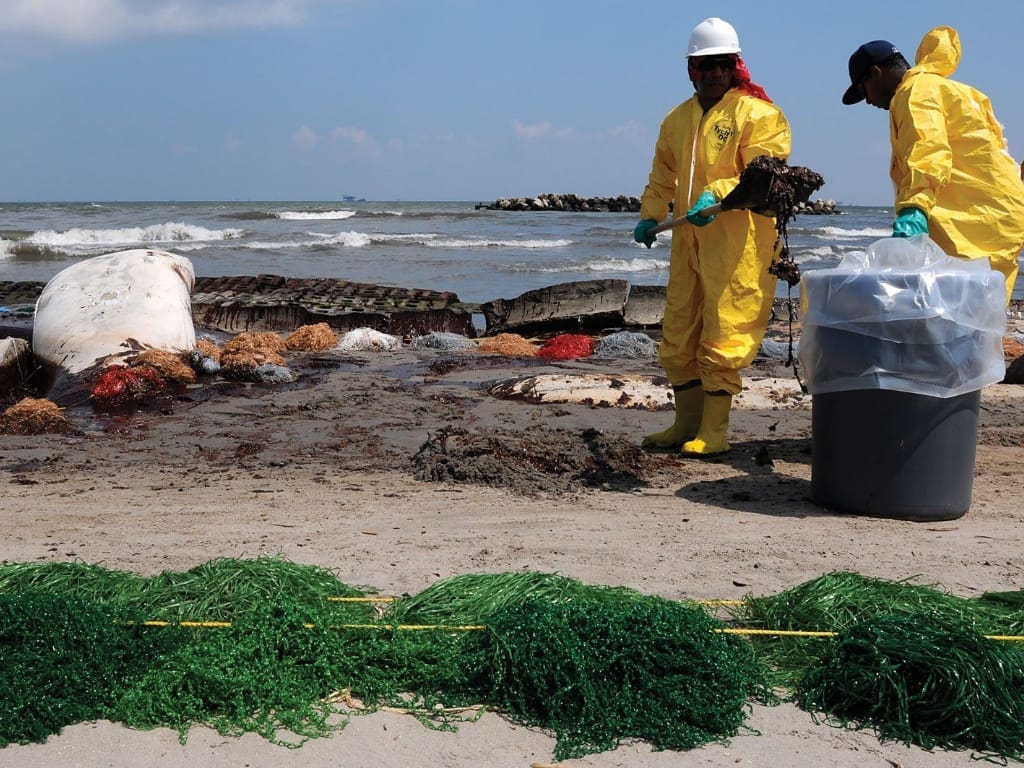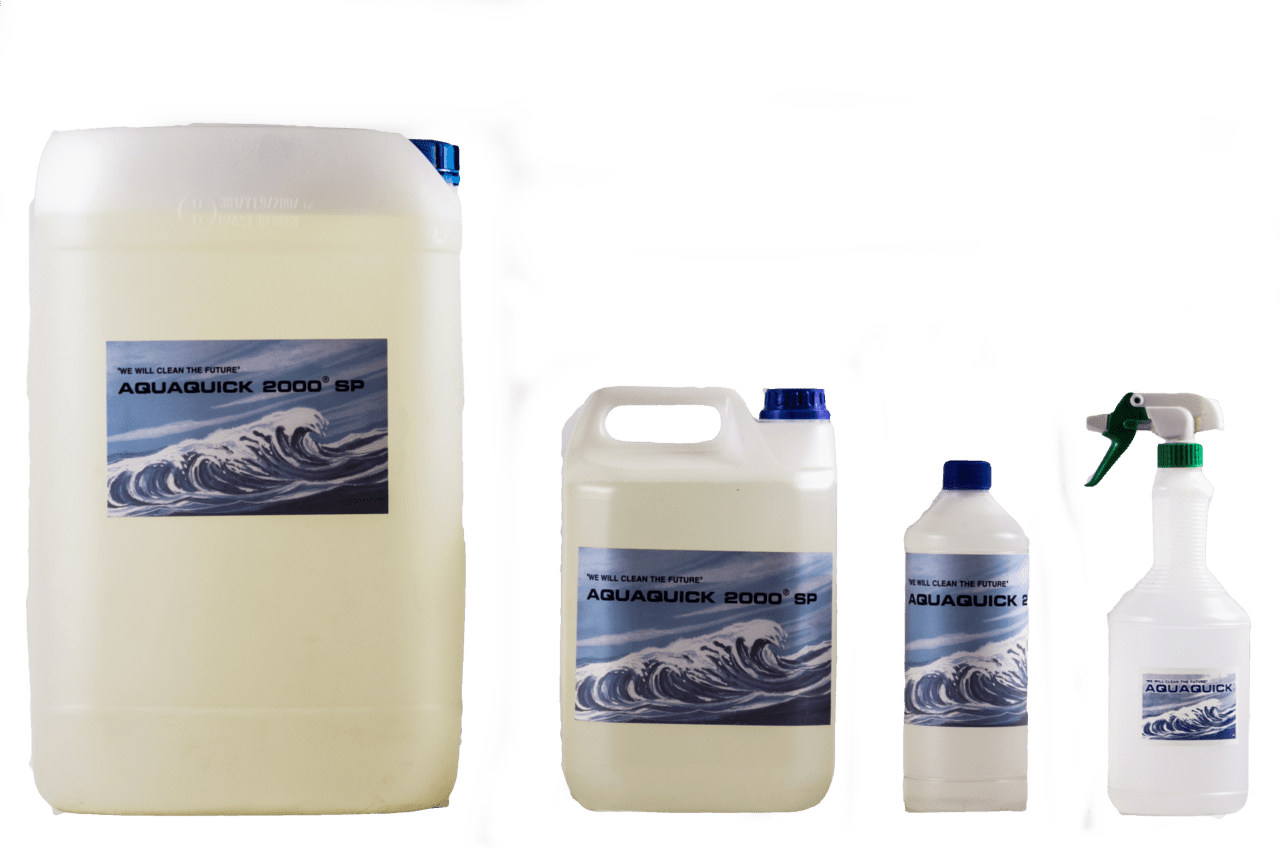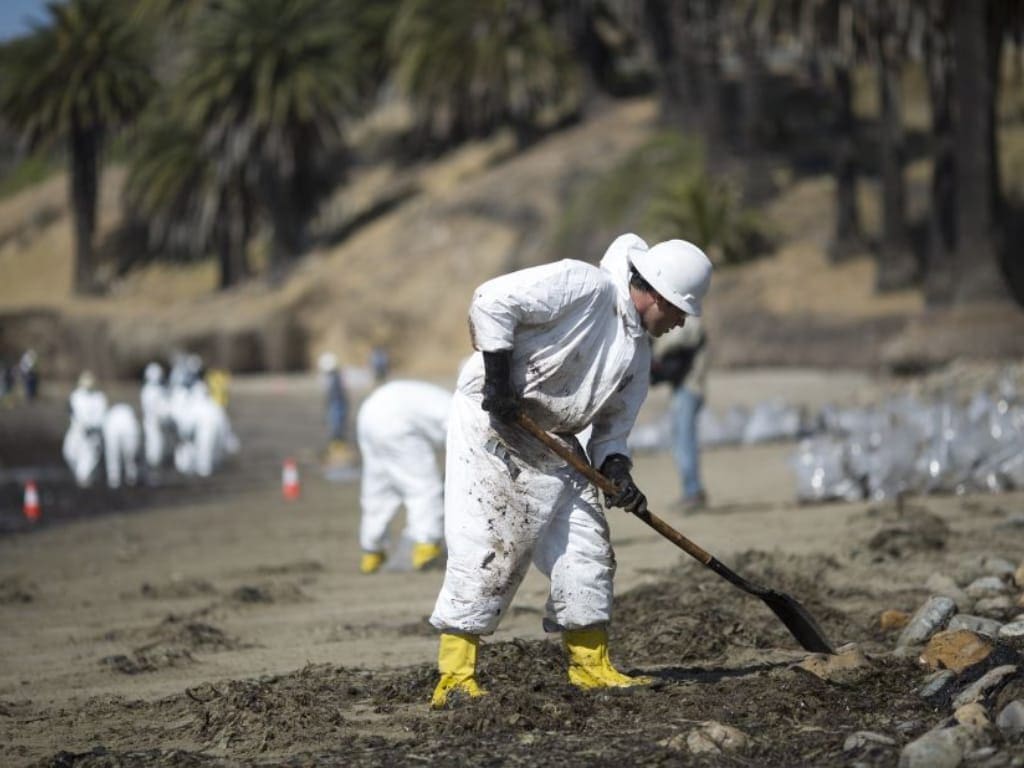Oil spills pose a significant threat to marine ecosystems, wildlife, and coastal communities worldwide that requires oil spill cleanup. When a spill occurs, rapid and effective cleanup efforts are essential to minimize environmental damage. However, engaging local communities in these cleanup efforts is equally critical for success. Community involvement not only enhances the manpower available for cleanup but also fosters a sense of ownership and responsibility towards environmental stewardship. This article explores the importance of community engagement in oil spill cleanup efforts and strategies for maximizing its effectivenes
Understanding the Impact of Oil Spills
Oil spills can have devastating effects on marine life, coastal habitats, and economies. The toxic components of crude oil can harm fish, birds, and other wildlife, while oil-contaminated beaches and marshlands can take years to recover. Furthermore, spills can disrupt fishing and tourism industries, affecting the livelihoods of coastal communities. Rapid response and efficient cleanup are essential to mitigate these impacts and restore affected areas to their natural state.
The Role of Community Engagement
Engaging local communities in oil spill cleanup efforts can significantly enhance response capabilities and improve outcomes. Communities possess valuable local knowledge, resources, and manpower that can complement professional cleanup operations. Moreover, involving residents in the cleanup process fosters a sense of empowerment and ownership, leading to greater commitment and participation.
Benefits of Community Engagement
1. Increased Manpower
Local residents can provide additional manpower for cleanup activities, such as shoreline monitoring, debris collection, and wildlife rescue efforts. Their familiarity with the area enables them to identify priority sites for cleanup and access hard-to-reach areas that may be overlooked by external responders.
2. Enhanced Resource Mobilization
Communities often have access to resources such as boats, equipment, and specialized knowledge that can facilitate cleanup operations. By tapping into these resources, response teams can augment their capabilities and respond more effectively to spill incidents.
3. Improved Public Awareness
Community engagement raises awareness about the environmental and economic impacts of oil spills, fostering a culture of environmental responsibility and preparedness. Through outreach initiatives and educational programs, residents learn how to respond to spill events, report sightings, and minimize their ecological footprint.
4. Long-term Environmental Stewardship
By actively participating in cleanup efforts, communities develop a vested interest in the health and sustainability of their local environment. This sense of stewardship extends beyond the immediate cleanup phase, leading to ongoing conservation efforts and advocacy for environmental protection measures.
Strategies for Effective Community Engagement in Oil Spill Cleanup
- Early Outreach and Communication: Establishing open lines of communication with local communities before a spill occurs is essential. Outreach efforts should include public meetings, workshops, and educational campaigns to inform residents about spill response protocols, potential risks, and ways to get involved.
- Collaborative Planning and Decision-making: Involve community members in the development of spill response plans and decision-making processes. Solicit input from stakeholders to identify priority areas for cleanup, allocate resources effectively, and address concerns related to environmental protection and public safety.
- Training and Capacity Building: Provide training opportunities for community volunteers to enhance their skills in oil spill response techniques, safety protocols, and wildlife rehabilitation. Empowering residents with the necessary knowledge and tools ensures a more coordinated and efficient cleanup effort.
- Recognition and Appreciation: Acknowledge the contributions of community volunteers through public recognition, awards, and appreciation events. Celebrating their efforts reinforces a sense of pride and accomplishment, motivating continued engagement in environmental initiatives.
Engaging communities in oil spill cleanup presents several challenges that need to be addressed to ensure effective collaboration and successful restoration efforts. The search results provide valuable insights into these challenges, which include:
1. Complex and Long-Term Impacts
- Oil spill cleanup efforts often focus on immediate response and containment, neglecting the long-term social, cultural, and economic impacts on affected communities.
- When responders leave after cleanup, communities are left to deal with the aftermath, including disruptions to their way of life and lasting environmental damage.
2. Cultural Sensitivity and Economic Dependence
- Communities whose social, cultural, and economic existence revolves around renewable resources like fishing are particularly vulnerable to oil spills that affect these resources.
- The Gulf Coast, for example, has fishing communities dependent on a healthy environment for their livelihoods and traditions, making them highly susceptible to the impacts of oil spills.
3. Communication Barriers
- Effective communication between response teams and local communities is essential for successful engagement.
- Language barriers, cultural differences, and limited access to information can hinder communication, leading to misunderstandings or delays in coordination.
4. Resource Constraints
- Limited funding, equipment shortages, and logistical challenges can hinder community participation in cleanup activities.
- Adequate resources are necessary to empower communities to actively engage in cleanup operations and support post-cleanup initiatives.
5. Risk Management
- Ensuring the safety of volunteers and community members involved in cleanup operations is crucial to prevent accidents or health hazards associated with exposure to oil-contaminated environments.
- Proper risk management protocols must be in place to protect participants during cleanup activities.
6. Sustainability Concerns
- Maintaining community engagement beyond the initial cleanup phase requires ongoing commitment from all stakeholders.
- Long-term sustainability efforts are needed to address environmental impacts, monitor ecosystem recovery, and promote sustainable practices in affected areas.
Common Reasons Why Communities May Not Participate in Oil Spill Cleanup

Despite the importance of community engagement in oil spill cleanup efforts, there are various reasons why some communities may be reluctant to participate. Understanding these barriers is essential for developing effective strategies to overcome them. Here are some common reasons why communities may not actively engage in oil spill cleanup:
- Lack of Trust: In some cases, communities may distrust government agencies or private companies responsible for spill response. Past experiences of inadequate communication, transparency, or accountability during cleanup efforts can erode trust and lead to skepticism about the effectiveness of involvement.
- Health and Safety Concerns: Oil spill cleanup operations can pose risks to the health and safety of volunteers and residents, particularly if proper safety protocols are not followed. Concerns about exposure to toxic chemicals, physical hazards, or long-term health effects may deter community members from participating, especially if they feel ill-equipped or inadequately protected.
- Limited Resources and Capacity: Communities facing socioeconomic challenges or resource constraints may lack the necessary equipment, training, or manpower to participate effectively in cleanup activities. The inability to allocate time and resources due to competing priorities or economic hardships can hinder community involvement in spill response efforts.
- Perceived Futility: In situations where the scale of the oil spill is extensive or the environmental damage appears overwhelming, community members may feel powerless to make a meaningful impact through their participation. A sense of hopelessness or resignation about the ability to mitigate the damage can dampen enthusiasm for involvement.
- Cultural or Language Barriers: Communities with diverse cultural backgrounds or linguistic differences may face challenges in understanding and navigating the complexities of oil spill cleanup operations. Language barriers, cultural norms, or communication gaps may hinder effective engagement and collaboration between response agencies and affected populations.
- Environmental Justice Concerns: Communities disproportionately impacted by environmental pollution or socio-economic disparities may perceive oil spill cleanup efforts as another instance of environmental injustice. Feelings of resentment or distrust towards authorities may be fueled by a sense of inequity in the distribution of resources, benefits, or burdens associated with the cleanup process.
- Lack of Incentives or Recognition: Communities may feel undervalued or overlooked if their contributions to oil spill cleanup efforts are not adequately recognized or rewarded. The absence of tangible incentives, such as financial compensation, volunteer recognition programs, or long-term benefits for affected communities, can diminish motivation and enthusiasm for participation.
Overcoming Barriers to Community Participation
Addressing these barriers requires a multifaceted approach that prioritizes trust-building, capacity-building, and inclusive communication. Strategies for overcoming barriers to community participation in oil spill cleanup efforts may include:
- Transparent Communication: Establish open lines of communication with affected communities, providing timely and accurate information about spill response efforts, risks, and opportunities for involvement.
- Community Empowerment: Involve residents in decision-making processes, allowing them to contribute their expertise, perspectives, and priorities to the cleanup planning and implementation.
- Capacity Building: Provide training, resources, and support to empower communities to participate effectively in cleanup activities, addressing safety concerns and building confidence in their ability to make a meaningful impact.
- Equity and Justice: Ensure that cleanup efforts prioritize environmental justice principles, recognizing and addressing the needs and concerns of marginalized or disproportionately impacted communities.
- Incentives and Recognition: Offer incentives, rewards, or recognition programs to acknowledge and celebrate the contributions of community volunteers, fostering a sense of pride and ownership in the cleanup process.
By addressing these common barriers and actively engaging communities in oil spill cleanup efforts, stakeholders can enhance the effectiveness, inclusivity, and sustainability of response activities, ultimately contributing to the restoration and resilience of affected ecosystems and communities.
Introducing AQUAQUICK 2000: Empowering Communities in Oil Spill Cleanup Efforts
As the world continues to grapple with the consequences of oil spills, innovative solutions have emerged to aid communities in combatting this environmental scourge. One such technology, AQUAQUICK 2000, stands out for its potential to revolutionize oil spill cleanup by providing a safe, cost-effective, and easy-to-use tool for community engagement. This section will explore how AQUAQUICK 2000 helps communities tackle oil spill cleanup, focusing on its unique features, advantages, and practical applications.
What Is AQUAQUICK 2000?
AQUAQUICK 2000 is a patented, portable, and lightweight device designed specifically for oil spill cleanup. It utilizes a combination of mechanical separation and filtration techniques to remove hydrocarbons from water surfaces efficiently and safely. The system consists of two main components – a floating boom equipped with a filter cartridge and a compact pump unit – both powered by solar energy.

Advantages of Using AQUAQUICK 2000
The AQUAQUICK 2000 provides several distinct advantages over conventional oil spill cleanup methods, making it an ideal choice for community engagement:
- Portability and Accessibility: Weighing only 8 kg (approximately 18 lbs), AQUAQUICK 2000 is easily transported using a backpack, allowing quick deployment even in remote locations where larger machinery cannot reach. Its portability also makes it suitable for use by individual volunteers or small community groups without specialized training.
- Cost-Effectiveness: Compared to other oil spill cleanup devices, AQUAQUICK 2000 is significantly less expensive due to its simple design and low manufacturing costs. Additionally, since it operates on solar power, there are no fuel expenses required, further reducing operational costs.
- Environmental Friendliness: AQUAQUICK 2000 does not produce any wastewater or secondary pollution, ensuring minimal harm to aquatic life and surrounding ecosystems. Moreover, the device’s filters can be reused multiple times before needing replacement, further minimizing waste generation.
- Safe Operation: Unlike many chemical dispersants used in oil spill cleanup, AQUAQUICK 2000 poses little risk to human health and the environment. As a physical separator, it avoids introducing toxic chemicals into the environment, thereby eliminating the risks associated with their usage.
- Versatility: AQUAQUICK 2000 can be deployed across diverse settings, including rivers, estuaries, bays, and coastlines. Furthermore, it can operate under varying weather conditions, making it adaptable to changing circumstances.
Practical Applications of AQUAQUICK 2000
AQUAQUICK 2000 demonstrates its utility in real-world scenarios, offering tangible benefits to communities engaged in oil spill cleanup efforts:
- Immediate Response: Due to its portability and ease of operation, AQUAQUICK 2000 enables rapid deployment in emergency situations, helping communities to initiate cleanup efforts immediately upon detection of an oil spill.
- Community Engagement: With its user-friendly interface and minimal technical requirements, AQUAQUICK 2000 encourages community participation in oil spill cleanup efforts, fostering a sense of ownership and responsibility towards the environment.
- Post-Cleanup Monitoring: After removing visible traces of oil from the surface, AQUAQUICK 2000 can continue operating as a monitoring tool, detecting residual contamination and facilitating targeted cleanup efforts.
- Disaster Preparedness Training: AQUAQUICK 2000 serves as an excellent resource for disaster preparedness training programs, equipping communities with the tools they need to respond swiftly and effectively to oil spill emergencies.
- Collaborative Partnerships: AQUAQUICK 2000 strengthens existing partnerships between communities, governments, NGOs, and private sector entities, encouraging cooperation and joint efforts in tackling oil spill crises.
Conclusively, AQUAQUICK 2000 represents a groundbreaking innovation in oil spill cleanup technology, offering a viable solution for communities seeking to combat the detrimental effects of oil spills. By leveraging its versatile capabilities, communities can foster greater engagement in oil spill cleanup efforts, ultimately safeguarding their natural environments and preserving their well-being.
Final Thoughts
Addressing these challenges through early engagement, capacity building, cultural sensitivity, clear communication strategies, and partnership development can help overcome barriers to community involvement in oil spill cleanup. By recognizing these challenges and implementing best practices for engaging communities effectively, stakeholders can enhance the success of cleanup operations and promote comprehensive environmental restoration following oil spill incidents.
Community engagement is a fundamental component of successful oil spill cleanup efforts. By harnessing the collective expertise, resources, and commitment of local residents, response teams can significantly enhance their capacity to mitigate environmental damage and restore affected areas. Moreover, engaging communities fosters a sense of shared responsibility and stewardship towards the environment, laying the foundation for long-term conservation efforts. As we strive to address the challenges posed by oil spills, collaboration between stakeholders at all levels is essential for achieving meaningful and sustainable outcomes.














